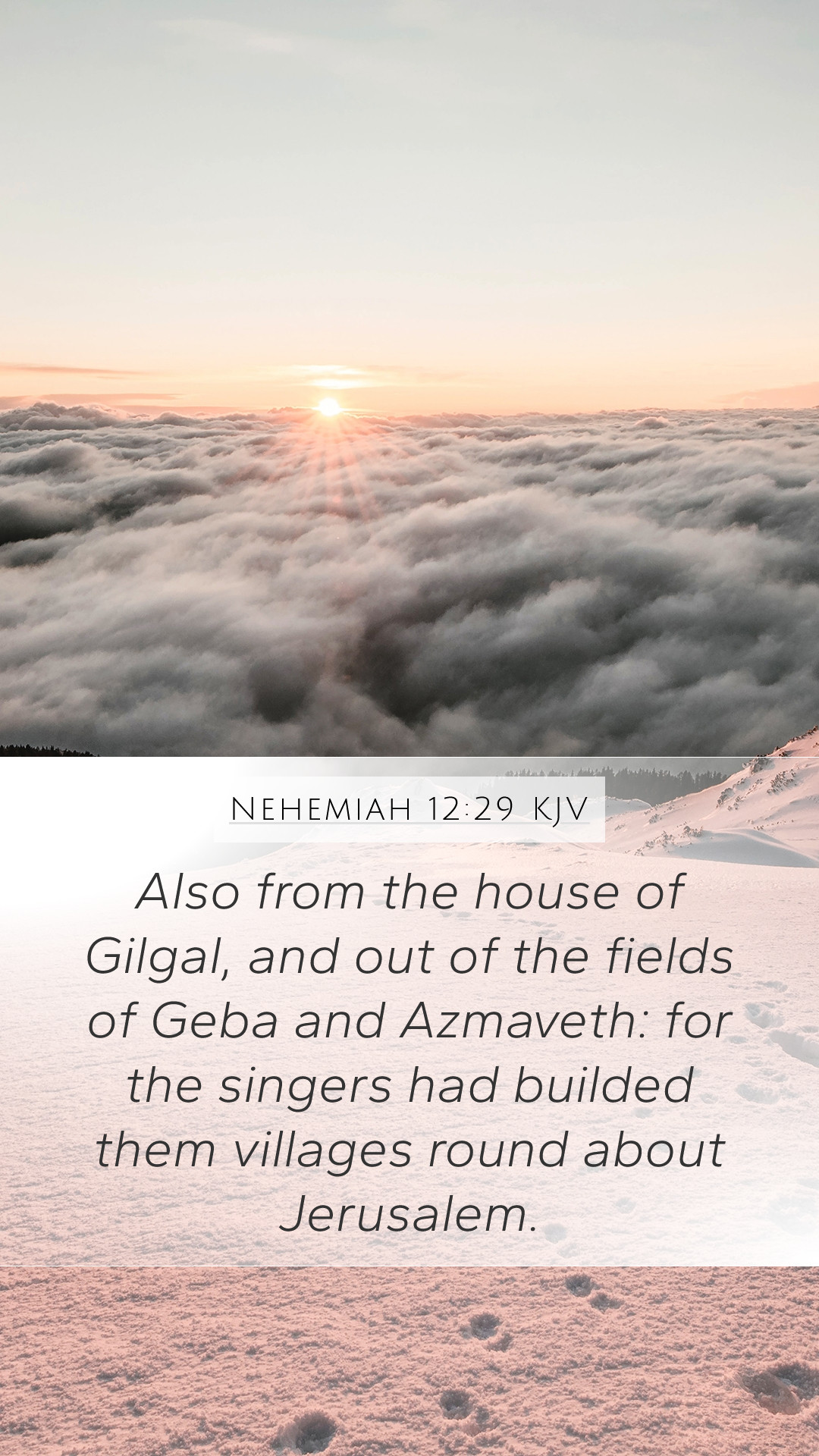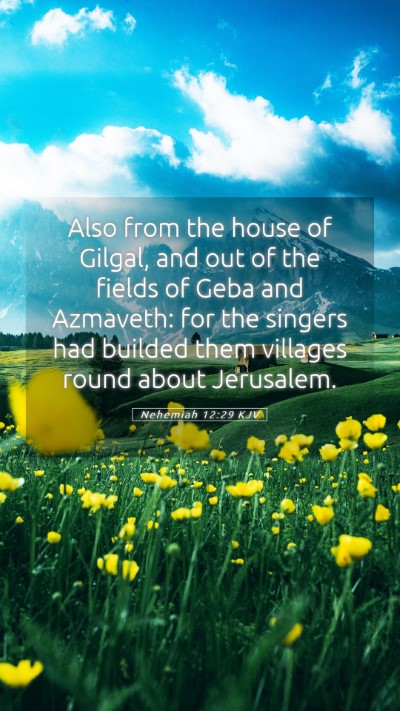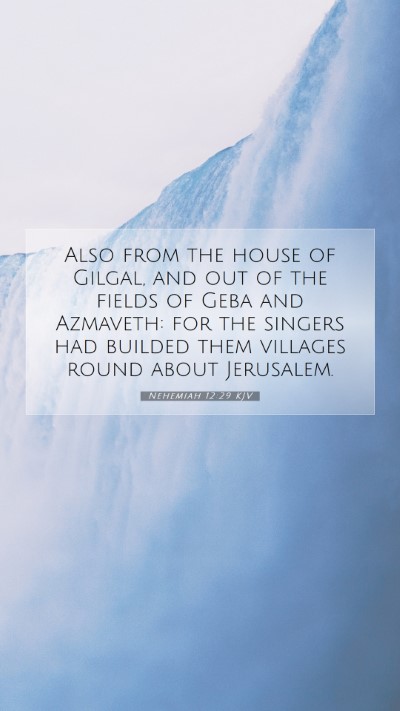Understanding Nehemiah 12:29
Nehemiah 12:29 is a significant verse within the context of Israel's post-exilic community, focusing on the priesthood and musical worship during the dedication of the wall in Jerusalem. Understanding this verse requires exploring its historical background, the roles of the priestly families mentioned, and the broader implications for worship and community identity in ancient Israel.
Verse Text
Nehemiah 12:29 (KJV): "Also from the gate of Joshua, which is over against the house of the ancient, they went up to the wall; and above the gate of Ephraim, and above the gate of Jeshanah, and at the gate of Meah, and between the going up of the wall, even above the house of the mighty."
Verse Meaning
Nehemiah 12:29 has several layers of meaning that reflect the restoration of Jewish worship and community following the Babylonian exile.
Historical Context
The verse is set during a time when the Jewish people were returning to Jerusalem and re-establishing their religious practices. The walls of Jerusalem, symbolizing protection and unity, were recently rebuilt under Nehemiah’s leadership, as outlined throughout the book. This act of dedication was not only a physical construction but also a spiritual one, reminding the returning exiles of their covenant with God.
Priestly Roles and the Importance of Worship
This verse highlights the importance of the priestly families and musicians in the worshipping community. Matthew Henry notes that these groups played a vital role in leading worship and ensuring that proper ceremonies were followed as prescribed in the Law of Moses. Adam Clarke emphasizes the need for spiritual reverence during such occasions, where the presence of God was sought through prayer, music, and sacrifice.
Symbolism of Gates
The multiple gates mentioned in this verse may symbolize various aspects of entrance into worship and the community. Each gate can represent different facets of spiritual access to God and the communal unity among the returning exiles. The gates themselves serve as reminders of God's protection and openness to His people, encouraging a spirit of rejoicing and dedication.
Key Themes
- Community Restoration: The rebuilding of the wall is emblematic of restoring the community identity of the Israelites.
- Priestly Duties: The roles of the priests and Levites highlight the organized structure of worship in post-exilic Jerusalem.
- Covenantal Remembrance: Reestablishing their covenant relationship with God through structured worship practices.
- Musical Worship: The emphasis on choirs and music illustrates the joyous nature of their dedication and faith.
Commentary Insights
Various biblical commentaries provide rich insights into Nehemiah 12:29:
- Matthew Henry: Emphasizes the celebratory nature of this dedication and the need for unity among God’s people as they worship together.
- Albert Barnes: Discusses the significance of the locations mentioned in the verse, and how they relate to the different aspects of Israelite worship and community identity.
- Adam Clarke: Highlights the ceremonial nature of this moment, relating it to Old Testament worship and its importance in re-instituting proper reverence for God.
Cross References
- Nehemiah 11:1: Discusses the leaders and inhabitants of Jerusalem’s commitment to repopulate the city.
- Ezra 3:10: Describes the laying of the temple foundation and the role of priests and Levites in worship.
- Psalm 122:1: Illustrates the joy and significance of going to the house of the Lord, mirroring the theme found in Nehemiah.
Applications for Today
Understanding Nehemiah 12:29 today involves recognizing the importance of structured worship and community involvement within the church. Drawing parallels to modern worship, we see how communities can come together to honor God, much like the Israelites did during the dedication of the wall.
Furthermore, the emphasis on music and joyful praise encourages believers to integrate worship into their daily lives, reflecting ancient practices. By interpreting this scripture through a historical lens, one can find personal applications that enhance both individual and communal worship experiences.
Conclusion
In summary, Nehemiah 12:29 serves as a key verse to understand the spiritual restoration of the Jewish people post-exile. It illustrates the importance of worship, community, and the active role of God's people in maintaining their identity and relationship with Him. Through combined insights from multiple commentaries, we gain a well-rounded understanding of this verse, offering a foundation for deeper Bible study insights and applications in our daily lives.


